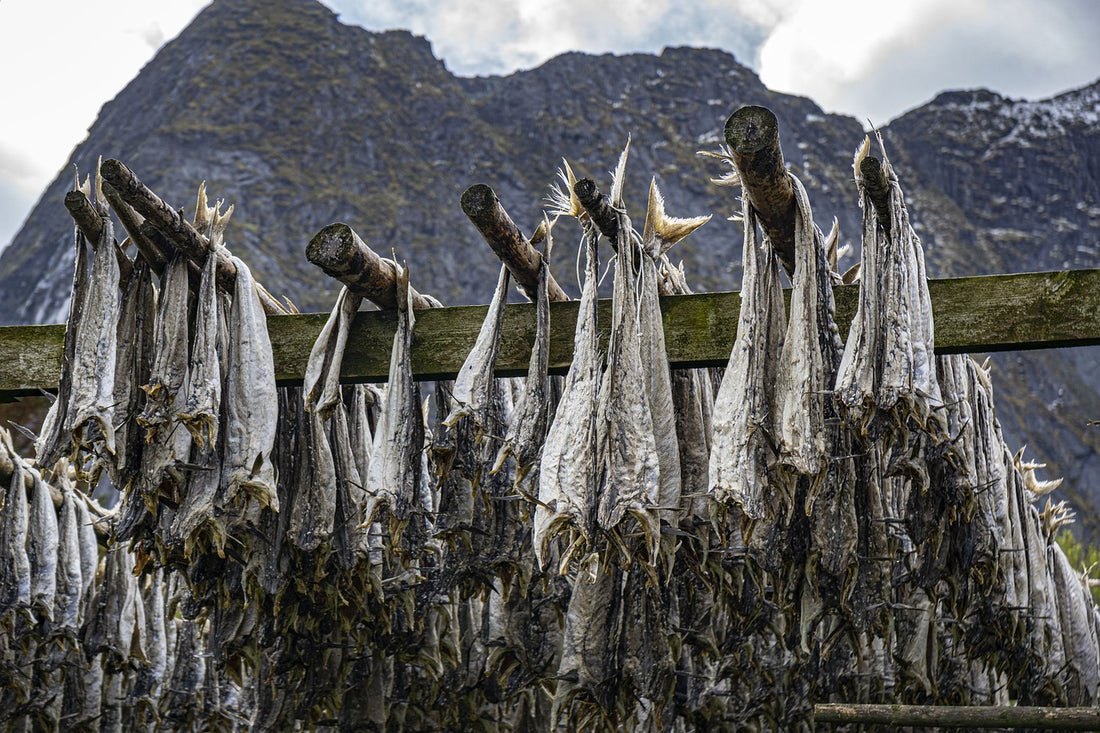The first documentation of dried fish goes all the way back to the Viking Age. In the Nordic countries, dried fish was important as a source of protein, especially in the cold months such as winter. The Vikings also started trading in dried fish and exported it to other parts of Europe.
In the Middle Ages, dried fish became a popular alternative to fresh fish, as it was easier to transport and retained its nutritional value for a longer time. Dried fish was also used as food for seafarers on long voyages, and was often part of the ration for the crew on the ship.
Dried fish is still an important part of Norwegian culture and food culture, especially in Northern Norway where it is an important export product and a traditional part of the diet. Today, dried fish is exported to several countries all over the world, and great emphasis has been placed on optimizing production to meet increased demand.
In addition to being part of the Norwegian food culture and contributing to the Norwegian economy, dried fish is also recognized as a healthy food product. Dried fish is rich in protein, omega-3 fatty acids and many other nutrients. It is also low in fat and calories and has been documented to help lower cholesterol levels and prevent heart disease.
Dried fish has also found its place in international dishes such as sushi and bacalao, and it has become increasingly popular among chefs and food enthusiasts who want to explore new flavors and food cultures.
Although dried fish is still an important traditional food, it has also been adapted to modern tastes and cooking techniques. It is a versatile ingredient that can be used in everything from stews and soups to salads and pasta dishes. There are several producers and suppliers of dry fish that have gotten creative with this food, and developed new dishes and recipes that help make dry fish more accessible and popular to a wider audience.
In sum, dried fish is an important part of Norwegian food culture and is a healthy food rich in nutrients that has found its place in modern dishes and tastes. It continues to develop and adapt to new trends and food cultures, and will probably continue to be a versatile and popular food product for many years to come.

